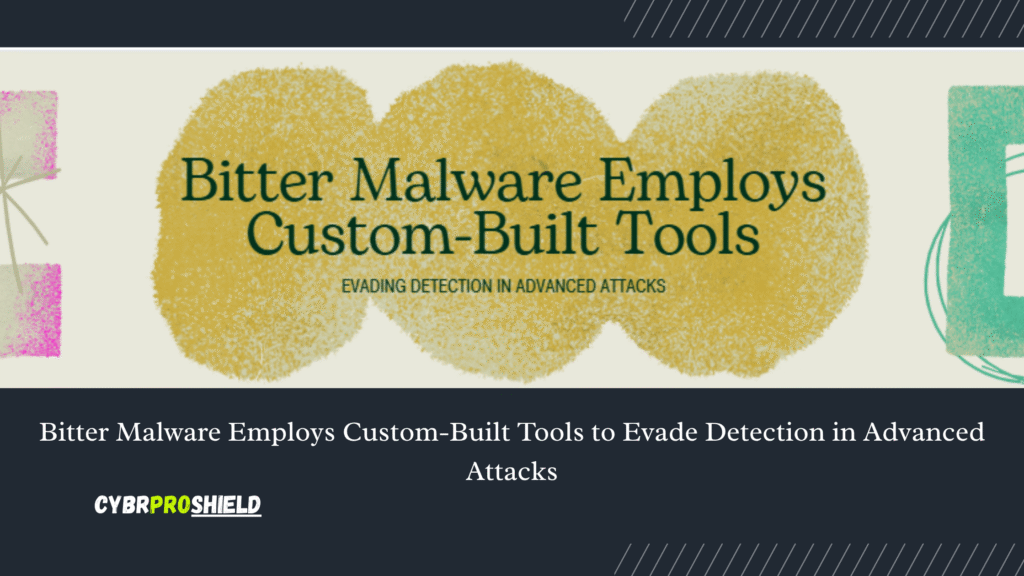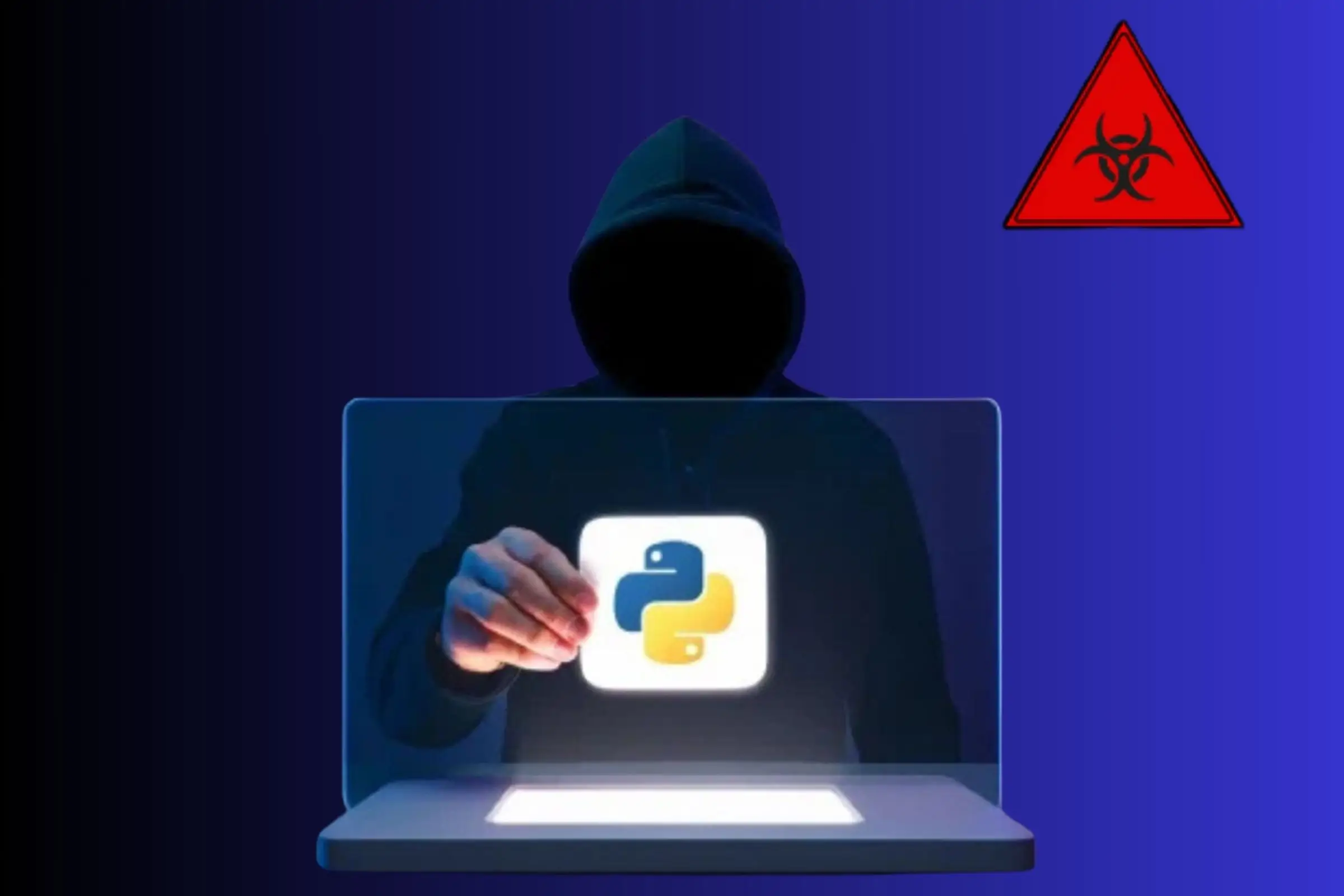In a world where cyber threats are growing more sophisticated by the day, a dangerous malware strain known as Bitter Malware has come into the spotlight for its custom-built evasion techniques. Recent cybersecurity reports have exposed how this malicious toolset, operated by the Bitter APT (Advanced Persistent Threat) group, is being used in targeted attacks against governments, critical infrastructure, and telecom organizations across Asia and the Middle East.
Unlike traditional malware, Bitter leverages bespoke tools to avoid detection, exfiltrate sensitive data, and maintain persistent access in compromised systems. These new findings have triggered concerns among cybersecurity experts about the capabilities of state-sponsored groups and the urgent need for advanced threat intelligence.
Who Is Behind Bitter Malware?
The Bitter APT group, also known as “APT-C-08,” is believed to have roots in South Asia and has been linked to several high-profile cyber-espionage campaigns. Their primary targets have traditionally included:
- Government entities
- Military organizations
- Telecommunications providers
- Energy and infrastructure firms
While attribution remains murky, threat intelligence points to nation-state backing, given the resources, patience, and technical sophistication demonstrated by Bitter.
How Bitter Malware Operates
What sets Bitter Malware apart is its use of customized attack tools and its ability to evolve based on target defenses. These attacks are typically multi-phased and stealthy, allowing the threat actors to remain undetected for months.
1. Initial Access via Phishing
Bitter commonly begins its attack by sending spear-phishing emails that appear to be from trusted entities. These emails often contain malicious Microsoft Office documents or links that exploit known vulnerabilities, such as CVE-2017-11882 or CVE-2021-40444.
2. Custom-Built Exploitation Tools
Once the target interacts with the malicious payload, Bitter deploys handcrafted exploitation frameworks tailored for the victim’s environment. These custom tools allow the malware to bypass traditional antivirus programs and EDR (Endpoint Detection and Response) systems.
3. Stealthy Data Exfiltration
The malware is capable of gathering:
- Files and documents
- User credentials
- Network configurations
- Browser cookies and email archives
It compresses and encrypts the stolen data before sending it back to Command and Control (C2) servers through encrypted tunnels, making detection nearly impossible.
Key Features of Bitter Malware
- Fileless Execution: It often runs in memory without writing to disk.
- Dynamic Command Control: Uses encrypted DNS and HTTP-based C2 infrastructure.
- Persistence Mechanisms: Registers scheduled tasks and modifies registry keys to relaunch after reboots.
- Anti-Forensic Techniques: Deletes logs and scrambles payloads to prevent reverse engineering.
These advanced techniques make Bitter Malware a nightmare for incident response teams.
Recent Targets and Campaigns
In 2024 and early 2025, Bitter Malware was found in several campaigns targeting:
- Military agencies in South Asia
- Electric grid operators in the Middle East
- Telecom operators in Southeast Asia
- Embassies and consulates of non-aligned nations
One specific case involved a zero-day exploit embedded in a fake job offer PDF sent to a high-ranking defense official, resulting in the exfiltration of internal policy documents.
Evasion Tactics That Beat Modern Security
Bitter APT’s success largely depends on its ability to stay under the radar. Here’s how they manage to bypass detection:
1. Custom Shellcode and Loaders
Instead of using popular malware frameworks like Cobalt Strike (which many antivirus programs now flag), Bitter develops proprietary shellcode loaders that change with each campaign.
2. Delayed Execution
Some payloads include timers that delay execution by hours or even days, tricking sandbox environments and security analysts.
3. Living-Off-the-Land (LotL) Binaries
Bitter often uses legitimate Windows utilities like PowerShell, WMIC, or certutil to perform malicious actions — a tactic known as LotL.
Bitter Malware vs Other APTs
Compared to well-known groups like APT28 or Lazarus, Bitter operates more quietly and regionally but is no less dangerous. While it lacks some of the broad-scale ransomware operations, it compensates with stealth and target specificity.
This makes Bitter a high-value threat in intelligence circles, especially for governments and private companies dealing with sensitive data.
Defending Against Bitter Malware
Organizations must adopt a proactive defense strategy to counteract Bitter and similar threats. Here are essential steps to reduce risk:
1. Patch Management
Most of Bitter’s exploits target known vulnerabilities. Keeping software up to date significantly reduces the attack surface.
2. Endpoint Protection
Use AI-powered Endpoint Detection and Response (EDR) tools that can identify suspicious behavior rather than just known signatures.
3. Email Security Gateways
Implement advanced spam filters and sandboxing for attachments to prevent spear-phishing.
4. Threat Intelligence Sharing
Collaborate with ISACs (Information Sharing and Analysis Centers) and cybersecurity forums to stay updated on IoCs (Indicators of Compromise).
5. Employee Awareness Training
Humans remain the weakest link. Regular training on phishing, suspicious attachments, and reporting protocols can be a game-changer.
Global Response and Mitigation Efforts
Cybersecurity firms like ESET, Proofpoint, and SentinelOne are actively tracking Bitter APT’s activities and have published threat reports detailing IoCs, payload signatures, and network behaviors. Governments are also investing in:
- National cybersecurity frameworks
- Public-private partnerships
- Cyber defense drills and tabletop exercises
The global cybersecurity community is increasingly emphasizing collaborative threat hunting to detect and neutralize APTs like Bitter before they cause significant damage.
Conclusion
The emergence of Bitter Malware underscores a harsh reality: threat actors are getting smarter, stealthier, and more targeted in their campaigns. With custom-built malware tools, delayed execution, and tailored exploits, Bitter is redefining the standards of advanced persistent threats.
Organizations must shift from reactive to proactive security strategies — combining modern tools, threat intelligence, and human awareness to stay a step ahead. In the world of cybersecurity, being just “good enough” no longer cuts it. It’s time to get smarter, faster, and more resilient — because Bitter isn’t going away anytime soon.










